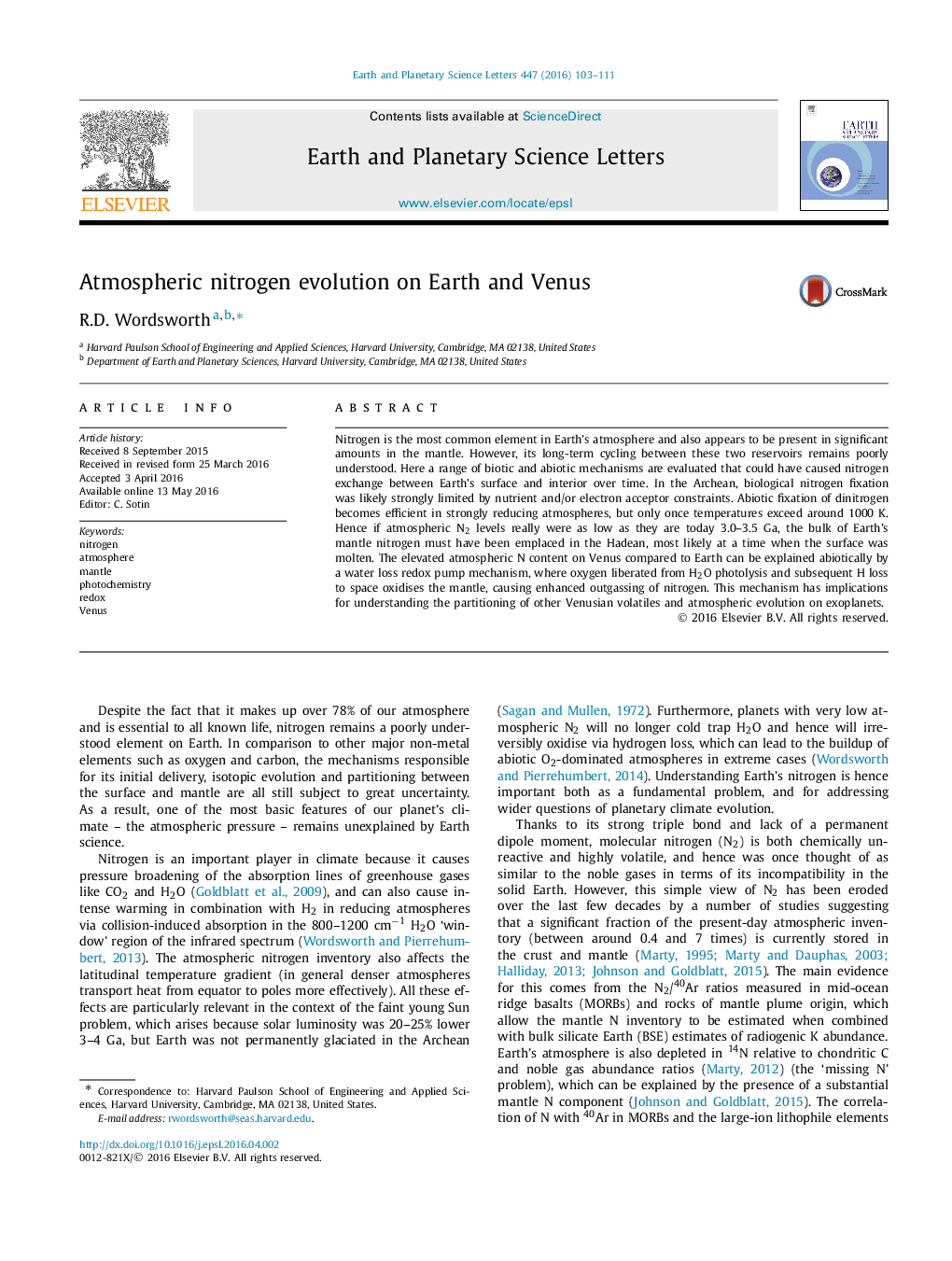| کد مقاله | کد نشریه | سال انتشار | مقاله انگلیسی | نسخه تمام متن |
|---|---|---|---|---|
| 6427468 | 1634709 | 2016 | 9 صفحه PDF | دانلود رایگان |
- The early evolution of atmospheric nitrogen on Earth and Venus is studied theoretically.
- The biological influence on nitrogen was likely limited in the early Archean.
- N fixation becomes effective in a hot reducing Hadean atmosphere.
- Mantle oxidation following water loss can explain the atmospheric N2 content of Venus.
Nitrogen is the most common element in Earth's atmosphere and also appears to be present in significant amounts in the mantle. However, its long-term cycling between these two reservoirs remains poorly understood. Here a range of biotic and abiotic mechanisms are evaluated that could have caused nitrogen exchange between Earth's surface and interior over time. In the Archean, biological nitrogen fixation was likely strongly limited by nutrient and/or electron acceptor constraints. Abiotic fixation of dinitrogen becomes efficient in strongly reducing atmospheres, but only once temperatures exceed around 1000 K. Hence if atmospheric N2 levels really were as low as they are today 3.0-3.5 Ga, the bulk of Earth's mantle nitrogen must have been emplaced in the Hadean, most likely at a time when the surface was molten. The elevated atmospheric N content on Venus compared to Earth can be explained abiotically by a water loss redox pump mechanism, where oxygen liberated from H2O photolysis and subsequent H loss to space oxidises the mantle, causing enhanced outgassing of nitrogen. This mechanism has implications for understanding the partitioning of other Venusian volatiles and atmospheric evolution on exoplanets.
Journal: Earth and Planetary Science Letters - Volume 447, 1 August 2016, Pages 103-111
